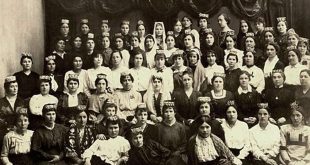These documents were composed by close companions, secretaries or other personnel in their vicinity, often inspired in structure and terminology by the sīra of the Prophet Muḥammad.
The rich sīra literature relating to the careers of imāms is a genre characteristic for the Zaydī communities in Yemen and in Iran. These documents were composed by close companions, secretaries or other personnel in their vicinity, often inspired in structure and terminology by the sīra of the Prophet Muḥammad. Their primary function was to legitimize the imāms, and describing their merits therefore formed an important element of such documents. The sīra of the Imām al-Mahdī li-Dīn Allāh Abū Ṭayr Aḥmad b. al-Ḥusayn (d. 656/1258) was composed by Sharaf al-Dīn Yaḥyā b. al-Qāsim al-Ḥamzī (d. 677/1278-9). The primary significance of the section of the sīra that is devoted to Aḥmad b. al-Ḥusayn’s formation, which is edited and analysed in the article, is that it provides a detailed picture of the intellectual scene in Yemen during the 7th/13th century and informs us about the characteristics of the formation of scholars during this period. Moreover, the document informs us about the works that were part of the transfer of knowledge from Iran to Yemen that began with the unification of the Caspian Zaydiyya and the Zaydīs in Yemen during the imamate of Abū Ṭālib al-akhīr (d. 520/1126) and gradually increased throughout the 6th/12th century until the death of the Imām al-Manṣūr bi-llāh in 614/1217.
Bibliographic Information
Title: The Literary-Religious Tradition among 7th/13th Century Yemenī Zaydīs: The Formation of the Imām al-Mahdī li-Dīn Allāh Aḥmad b. al-Ḥusayn b. al-Qāsim (d. 656/1258)
Author(s): Hassan Ansari & Sabine Schmidtke
Published in: Journal of Islamic Manuscripts 2 (2011)
Language: English
Length: 52 page
The literary-religious tradition among 7th13th century Yemenī Zaydīs
 Ijtihad Network Being Wise and Faithful Muslim in the Contemporary World
Ijtihad Network Being Wise and Faithful Muslim in the Contemporary World

